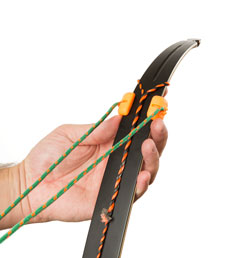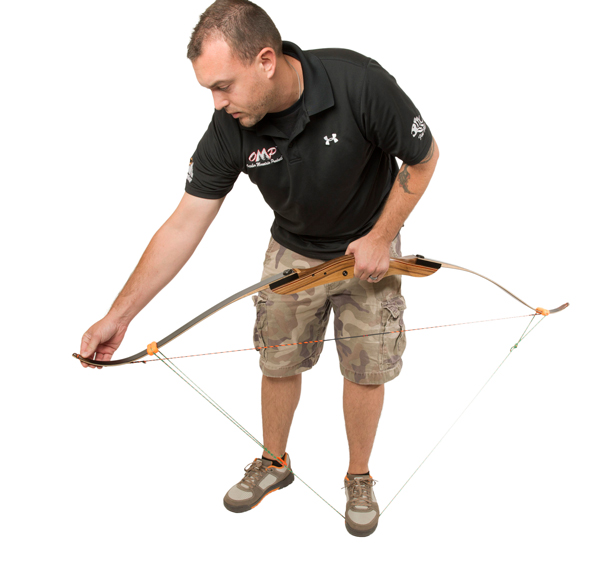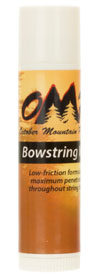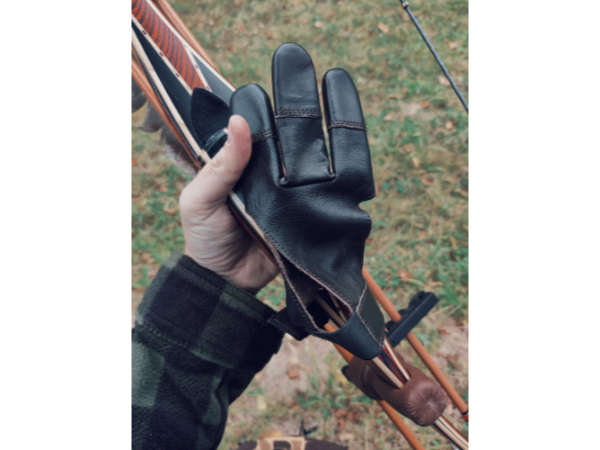With the right techniques, and consistent care, the life of your traditional bow can be lengthened significantly. When caring for your bow, there is some regular maintenance that should be done, as well as a few things that should never be done to your bow. Check out a few tips that can lengthen and save the life of your bow.
Dry Firing
As with most bows, it’s crucial to never dry fire your traditional bow. Pulling back a bow creates stored energy in the strings. When the strings are released, the stored energy goes to the arrow ultimately pushing the energy through the bow. When dry firing occurs, the energy doesn’t have a place to go, and will go through the bow itself. This will result in damage such as cracking, breaking the string, or breaking bow limbs.
In the event you did dry fire your bow, take a cotton ball over the limbs to make sure there aren’t any splinters. The cotton ball will catch on any rough surface so you’ll be able see if the limbs are damaged. It is also important to take your bow to your local shop so a bow professional can inspect it for further damage.
 Stringing Your Bow
Stringing Your Bow
Every time your string and unstring your bow, it’s important to use a bow stringer. It may seem like an extra, and sometimes unnecessary step, but the extra safety precaution can prevent serious injuries. There is a lot of tension on the limbs and string, and the bow stringer acts as a safety device for any mishaps. Without the use of a bow stringer the string can easily dislodge and recoil damaging the bow, and harming yourself.
Storing
When you are finished shooting your traditional bow, make sure you properly store it. Where you store it should be out of direct sunlight, and it should never be propped up in a corner standing on one end. Laying your bow flat without pressure on either side, or on top, is ideal.
Additionally, your bow should never be stored strung. Once you finish shooting, the bow should be unstrung for storage. Since traditional bows are made from different woods, the tension from the string can cause the wood to warp over time. It can also cause undo tension on the limbs causing delamination which means you will have to replace them often, and sooner than expected.
Wax Your String
Keeping your strings waxed and lubricated is essential to the life and elasticity of the string. Your string should have a tacky type feel. If you string has fraying, or something that looks like tiny hairs stick out, it’s a sign you’re your sting needs waxed. If you notice sections of your string sticking out that aren’t tiny and hair-like, this is an indication it is time to get a new string. Waxing can be done periodically, and does not need to be done every time you shoot your bow.
Additionally, if you haven’t shot your bow, and it has been sitting for a few months, you may want to wax your limbs as well. Before waxing, make sure you know what your limbs are made of, and apply the correct wax for the material. Typically, automotive polishing compound can be used for most limbs. Apply the wax, and then remove with a clean cloth. This will remove dirt, mildew, or scuff marks. Once the polishing compound is removed, buff your bow with furniture polish.
These are just a few simple steps that can be done at home to preserve the life of your bow. Remember, if you haven’t shot your bow in a few months, or you see anything questionable about your bow, take it to your local archery shop for inspection from a professional.








Great comments Nathaniel,
however I would just add that with modern “traditional” recurve bows it is possible to leave them strung when stored properly.
I have a couple of “Huntsman” bows made by Mark Kimber of Australia and he has bows he made and uses himself that have not been unstrung for over five years with negligible loss of draw weight.
I my self have had my bow strung for over a year now with no reduction in draw weight. I am not sure about other custom bow makers but I do know that the “Huntsman” bows are made of only the best quality materials, may be that could be the difference ?
Regards
Chris
Great comments Nathaniel,
however I would just add that with modern “traditional” recurve bows it is possible to leave them strung when stored properly.
I have a couple of “Huntsman” bows made by Mark Kimber of Australia and he has bows he made and uses himself that have not been unstrung for over five years with negligible loss of draw weight.
I my self have had my bow strung for over a year now with no reduction in draw weight. I am not sure about other custom bow makers but I do know that the “Huntsman” bows are made of only the best quality materials, may be that could be the difference ?
Regards,
Chris